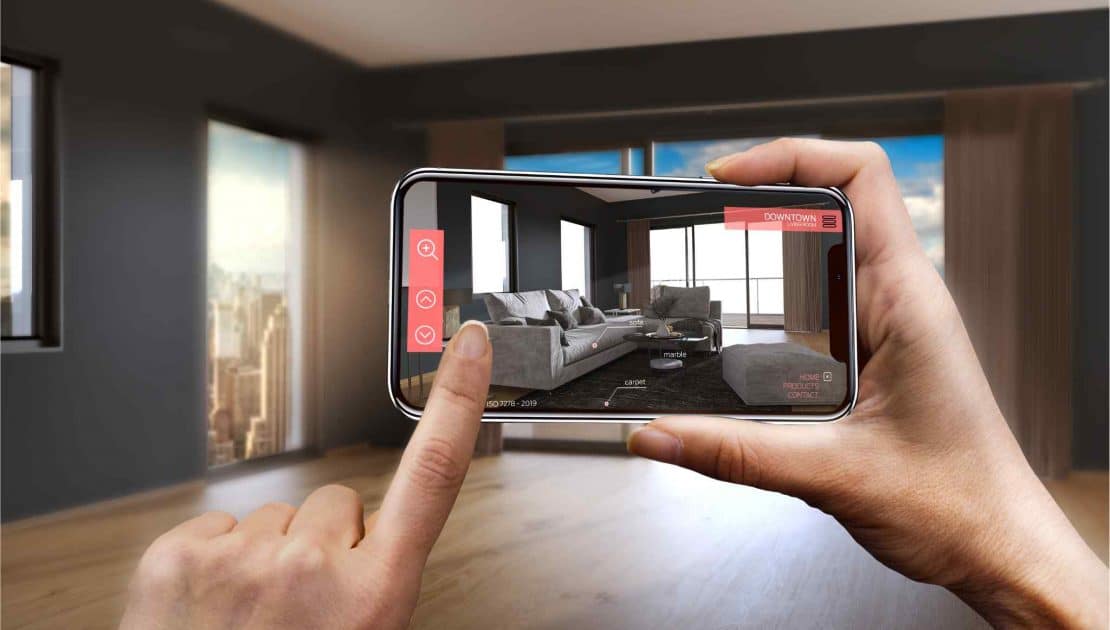Augmented Reality in Online Learning: Transforming Education

Augmented Reality (AR) is making waves in education, turning traditional learning on its head. AR brings a new dimension to online learning by overlaying digital information in the real world, making it interactive and immersive. It’s not just about enhancing the visual experience; AR is set to revolutionize how we understand and engage with educational content.
In this article, we’ll explore the top 10 benefits of AR in online learning. From simplifying complex concepts to boosting student engagement and collaboration, AR is reshaping the educational landscape.
Let’s dive into the transformative impact of AR on learning, highlighting how it’s changing the game for educators and students alike.
Interactive Learning Experiences
AR breathes life into online learning, making it a hands-on and immersive experience. Imagine studying the stars by having constellations appear in your living room or dissecting a frog without the mess. AR brings subjects off the page and into the real world, making learning interactive and engaging.
Apps like Google Expeditions push the boundaries of engagement by taking students on virtual field trips. From the ocean’s depths to Mars’s surface, these adventures make learning vivid and memorable. It’s one thing to read about the Roman Colosseum; it’s another to stand within its walls, hearing the echoes of ancient cheers. This is the power of AR: transforming passive learning into an active discovery, keeping students captivated and eager for more.
Improved Accessibility
Augmented Reality is breaking down barriers in education, making learning more accessible to students with disabilities. AR can provide visual, auditory, and haptic feedback to cater to diverse learning needs. For instance, students with visual impairments can interact with 3D models that emit sounds or vibrations to indicate different features, turning abstract concepts into tangible experiences. This inclusivity ensures that education is not one-size-fits-all but accessible to everyone, regardless of their abilities.
AR also supports personalized learning paths, allowing students to learn at their own pace and style. Whether it’s through augmented flashcards that adapt to a student’s proficiency level or interactive simulations that respond to individual interactions, AR technology can tailor educational content to meet the unique needs of each learner.
Enhanced Engagement and Motivation
AR is like a magnet for student attention, significantly increasing motivation and engagement. Picture this: students are not just sitting and listening; they’re actively participating, exploring, and even competing in a learning landscape that’s vivid and interactive.
Gamified learning through AR taps into our love for games, making education fun and rewarding. Imagine earning points for solving math problems or advancing through history quests. This blend of play and learning keeps students hooked, transforming the sometimes monotonous task of studying into an exciting challenge. Through AR, learning feels less like a chore and more like a game you don’t want to put down.
Better Understanding of Complex Subjects
Augmented Reality shines when it comes to demystifying complex subjects. Vivid visualization breaks down intricate ideas into digestible, interactive pieces. Imagine turning a complex molecular structure into a 3D model that students can explore from all angles. This hands-on approach transforms abstract concepts into tangible experiences, making tough topics like quantum physics surprisingly straightforward.
Real-World Skill Development
Augmented Reality bridges the gap between theoretical knowledge and practical skills, making learning deeply relevant to real-world applications. Instead of just reading about a concept, students can use AR to simulate real-life scenarios where they apply what they’ve learned. This hands-on approach ensures that learners are knowledgeable, skilled, and ready to tackle real-world challenges.
For example, AR simulations in medical training allow students to perform surgical procedures without the risks of actual surgery. Similarly, engineering students can use AR to build or interact with machinery and structures, gaining valuable experience in a safe, controlled environment. These examples highlight how AR provides a practical, risk-free platform for developing essential skills and preparing students for their future careers with confidence.
Increased Collaboration
AR isn’t just about individual learning; it promotes collaboration. In online learning, where students may feel isolated, AR bridges the gap by creating shared, immersive experiences. Imagine students worldwide working together on a virtual science experiment or collaborating on an architectural project in a digital environment. AR promotes teamwork by making it feel like everyone is in the same room, even miles apart.
Instant Feedback and Assessment
Augmented Reality in online learning reshapes feedback delivery by providing it in real-time. This feature lets learners immediately understand and correct mistakes, significantly enhancing the learning curve. Instant feedback ensures that learning is a continuous, interactive process, preventing the accumulation of misunderstandings and reinforcing correct knowledge as learners progress through their material.
AR also facilitates personalized learning assessments by adjusting to each learner’s pace and comprehension level. This adaptive approach ensures that assessments are neither too challenging nor simple, promoting an optimal learning environment. Personalized assessments help identify specific areas of strength and improvement, making learning more focused and efficient.
Cost-Effective Learning Materials
AR reduces the need for physical learning materials, transforming how we access educational content. By bringing digital overlays into the real world, AR eliminates the necessity for costly textbooks and physical models, making learning both innovative and more budget-friendly.
Over time, implementing AR in online courses proves financially savvy. It reduces the recurring costs of updating and purchasing traditional materials, offering a sustainable, cost-effective solution for educational institutions and learners. This shift towards AR modernizes education and significantly lowers long-term educational expenses.
Encouraging Creativity and Innovation
Augmented Reality opens new doors for creative expression and problem-solving in learning. It encourages students to visualize complex concepts in 3D, pushing the boundaries of their imagination and creativity. This immersive experience fosters a hands-on approach to education, making it more engaging and interactive.
AR’s interactive nature also stimulates innovative thinking skills. It challenges learners to approach problems differently, cultivating a mindset that values innovation and creative solutions.
Enhancing Education Through AR
Augmented Reality has the transformative power to redefine online learning, making it more interactive, engaging, and effective. Integrating AR makes educational content alive, providing instant feedback, personalized assessments, and a deeper understanding through immersive experiences.
We encourage educators and institutions to dive into the world of AR technologies. Embracing AR enriches the learning experience and prepares students for a future where digital and physical realities are seamlessly blended. Let’s explore AR’s possibilities for education, unlocking new ways to inspire and educate.
Book a demo today and discover how Webanywhere’s custom Learning Management System can elevate your organization’s learning and development strategy to the next level.


